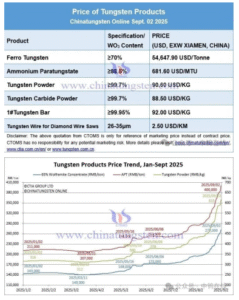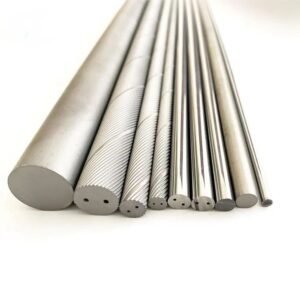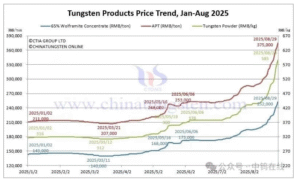Introduction
The development of hard alloy inserts has been one of the most significant technological advancements in the field of manufacturing. As industries demand higher performance, greater precision, and longer tool life, advancements in the technology of carbide inserts continue to push the boundaries of what is possible. This article will explore the innovations in coating technologies, insert geometries, and material formulations that have revolutionized the machining industry, improving tool life, cutting performance, and cost-effectiveness.
The Role of Coatings in Enhancing Hard Alloy Inserts
Coatings have become an essential part of hard alloy inserts, providing critical enhancements to their properties, including wear resistance, heat resistance, and lubrication. Over the years, coating technologies have evolved, offering increased efficiency and longevity for carbide inserts.
- CVD (Chemical Vapor Deposition) Coatings Chemical Vapor Deposition (CVD) is one of the most commonly used coating techniques for carbide inserts. CVD coatings, such as TiC, TiN, and Al2O3, are applied through a chemical reaction at high temperatures, creating a strong, durable layer on the surface of the insert.
- Advantages: The CVD process results in coatings that provide excellent wear resistance and thermal stability, which are essential for high-speed machining of tough materials like stainless steel, titanium, and heat-resistant alloys. The coatings also provide better resistance to chemical wear and oxidation.
- Applications: CVD-coated inserts are widely used in turning, milling, and drilling operations, especially in industries such as aerospace, automotive, and heavy machinery.
- PVD (Physical Vapor Deposition) Coatings Physical Vapor Deposition (PVD) coatings, such as TiAlN (Titanium Aluminum Nitride) and CrN (Chromium Nitride), are applied through a vacuum process that results in a thin, dense, and highly adherent layer on the insert.
- Advantages: PVD coatings are known for their superior hardness, low friction, and excellent resistance to wear and oxidation. Unlike CVD coatings, PVD coatings can be applied at lower temperatures, making them ideal for tools that need to retain their toughness while operating at high cutting speeds.
- Applications: PVD-coated inserts are particularly useful in high-speed machining operations, where heat buildup is a concern. These coatings are commonly used for machining stainless steel, hardened steel, and other difficult-to-machine materials.
- Multi-layered and Nano-Coatings The advent of multi-layered and nano-coatings has taken the performance of carbide inserts to the next level. These advanced coatings involve the combination of several layers of different materials at the nanometer scale to enhance the properties of the tool.
- Advantages: Nano-coatings provide extremely fine surface structures, offering superior hardness, resistance to thermal fatigue, and improved wear resistance. The multi-layered approach further enhances the insert's ability to withstand high temperatures and abrasive environments.
- Applications: Multi-layered coatings are used in high-precision operations, such as aerospace machining and medical device manufacturing, where durability and surface finish are critical.
Innovations in Insert Geometries
Along with coating technologies, the geometry of carbide inserts has evolved significantly over the years. By modifying the shape, edge design, and chip control features of the inserts, manufacturers have been able to optimize cutting performance and efficiency in a wide range of applications.
- Chip Control and Evacuation Effective chip control is essential for maintaining cutting efficiency and preventing issues like clogging or interference during machining. Modern carbide inserts are designed with geometries that allow for improved chip evacuation.
- Innovations: Inserts with advanced chip breakers, such as double-sided or multi-directional chip breakers, help reduce the risk of chip buildup and ensure consistent chip flow. This reduces cutting forces and prevents thermal damage to the tool and workpiece.
- Applications: Inserts with enhanced chip control are particularly useful in turning and milling operations involving high-speed machining or tough materials such as cast iron or superalloys.
- Improved Cutting Edges and Nose Radii The cutting edge geometry plays a vital role in the performance of carbide inserts. Innovations in cutting edge design, such as sharper edges or optimized nose radii, have improved insert efficiency and surface finish.
- Advantages: Sharper cutting edges reduce cutting forces and provide better surface finishes, particularly in delicate or precision machining. Optimized nose radii can improve tool strength and reduce the risk of insert failure during heavy-duty operations.
- Applications: These innovations are particularly beneficial for precision machining of materials such as aluminum, titanium, and high-strength alloys, where surface finish and dimensional accuracy are critical.
- Modular Insert Systems The rise of modular insert systems has allowed manufacturers to achieve greater flexibility in their operations. These systems allow inserts with different geometries and coatings to be easily swapped in and out of toolholders, adapting to changing machining conditions and material types.
- Advantages: Modular systems improve efficiency by reducing setup time and tool changeover time. They also provide cost savings, as users can utilize the same toolholder for a wide variety of insert types, reducing inventory needs.
- Applications: Modular systems are ideal for operations that require frequent changes in cutting conditions, such as high-mix, low-volume manufacturing in industries like automotive and aerospace.
Advancements in Materials for Hard Alloy Inserts
While tungsten carbide remains the primary material for hard alloy inserts, ongoing innovations in materials science have led to the development of composite materials and new carbide formulations that offer even greater performance.
- Advanced Carbide Composites Advanced carbide composites combine tungsten carbide with other materials, such as cobalt, titanium, or ceramics, to enhance specific properties like toughness, thermal stability, and wear resistance.
- Advantages: These composites offer enhanced fracture toughness, which is essential for heavy cutting operations, as well as improved resistance to thermal shock and oxidation. This makes them ideal for high-heat applications like high-speed turning of heat-resistant alloys.
- Applications: Advanced carbide composites are used in demanding machining applications, such as the aerospace and power generation industries, where extreme temperatures and high cutting forces are common.
- Cermet Inserts Cermet (ceramic-metal composites) inserts are another innovation that has gained popularity for their ability to handle high cutting speeds while maintaining excellent surface quality.
- Advantages: Cermet inserts combine the hardness and wear resistance of ceramics with the toughness of metals, offering an ideal balance of performance for high-speed machining of ferrous and non-ferrous materials.
- Applications: Cermet inserts are used in high-precision operations such as finish turning and milling of materials like stainless steel, where surface finish and tool life are crucial.
- Metal-Matrix Composites (MMC) Inserts Metal-matrix composites, which combine metals like aluminum or titanium with ceramics, have shown promise in offering exceptional resistance to wear and thermal cycling.
- Advantages: MMC inserts are particularly effective in machining materials that are prone to heat buildup or wear, such as aluminum alloys and high-strength steels. They offer high thermal conductivity and improved resistance to thermal fatigue.
- Applications: MMC inserts are ideal for aerospace and automotive applications, where machining operations often involve high temperatures and abrasive material.





